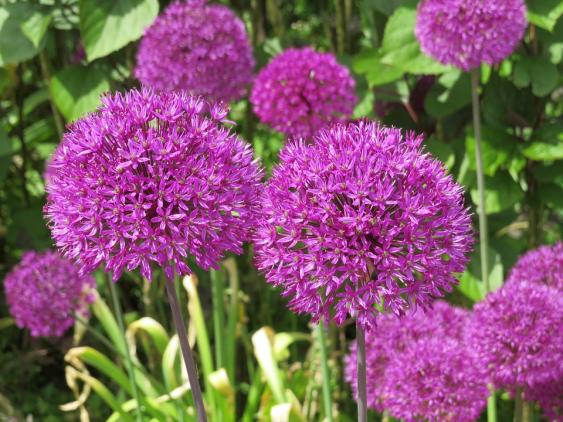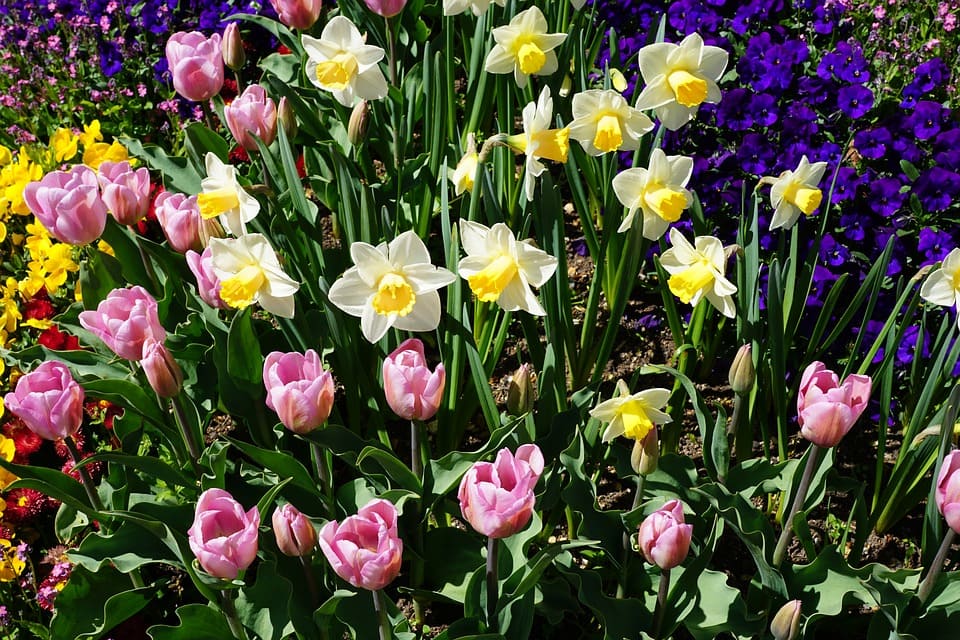Tulips and Daffodils. Photo Credit: Pixabay
Plant ahead this fall for terrific spring color.
Spring bulbs can be planted until the soil freezes, so there’s still plenty of time to plant. A colorful display of blooms start early spring with crocuses and snowdrops, followed by hyacinth, daffodils, tulips in mid spring, and alliums and tulips in late spring.

Alliums. Photo Credit: Pixabay
Planting Basics
Just dig a hole, drop in the bulb (pointed ends should be facing up), cover it up, and water. Then forget about them! It’s about the easiest kind of garden to grow. They will begin to establish roots in the moist, cool soil; then lie dormant over the winter until the warmer temperature prompts them to sprout.
It’s ok to plant bulbs in large quantities for massive stunning displays. Digging a large hole and planting a few dozen saves time.
As a general rule of thumb, spring flowering bulbs should be planted a depth approximately 2 l/2 to 3 times the diameter of the bulbs.
Facts to Consider
Don’t want to be bothered by deer or rodents? Consider buying daffodils or alliums.
They are resistant to nibbling or digging by animals.
Buy in large quantities. Planting a few bulbs here or there isn’t going to have the impact you want. Plant at least 50 of one specimen, whether it’s by your patio or walkway.
Naturalizing Daffodils multiply. All Narcissus are good but some Narcissus actually naturalize. Naturalizing plants reproduce new bulbs underground, thickening over time and producing more flowers. And you can’t beat their price.
Since flowers from bulbs are perennials, you can count on them to keep coming back for years to come. Want a pop of color next spring but lack the time to make it happen?
Call Whitehouse Landscaping at 484-300-4290 and we can prepare a bed if necessary and give you that spring garden you’ve always wished for!

